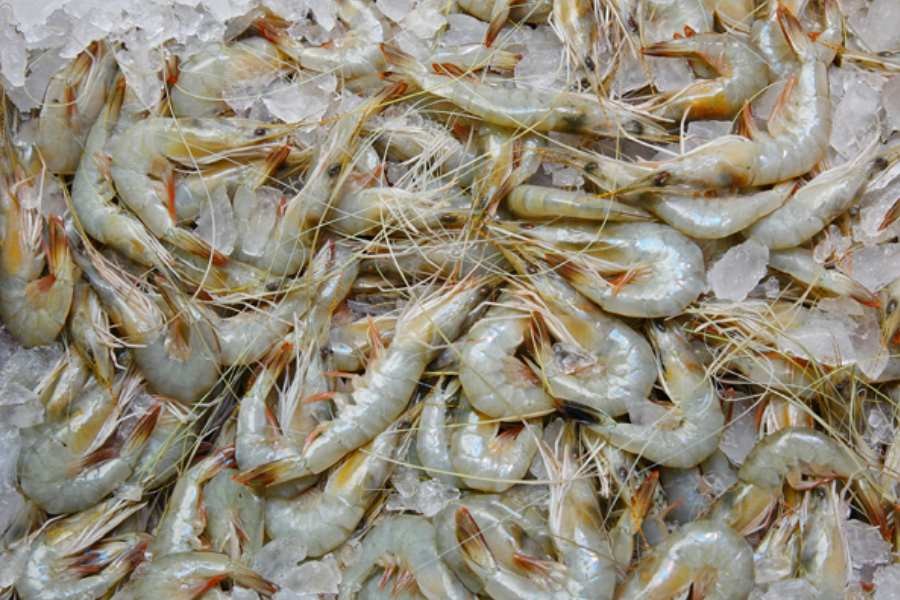The once-promising export-oriented frozen fish sector is fast becoming moribund with 54 per cent of the total processing plants closed down over the years.
Most of the remaining facilities are struggling to survive, as sector insiders bemoan the fact.
Unavailability of exportable fish, especially shrimp, in the local market is the key reason behind this worst situation in the industry, they said.
The country once boasted 110 frozen fish factories bagging the second position among the total export-oriented sectors even a decade ago.
But the number has come down to as low as 50 now.
What is more, some 30 are irregular in production, sources at the Bangladesh Frozen Foods Exporters Association (BFFEA) said.
The remaining 20 are running regularly but have incurred huge losses in the past two years for paucity of shrimp as the raw material.
Shrimp contributes 91 per cent of the total frozen fish export and other varieties 9.0 per cent.
Many factory owners have already gone bankrupt, the BFFEA sources added.
If such falling trend continues, they said, the industry may bite the dust sooner or later.
They sought the necessary state support for farmers and plant owners to boost cultivation of shrimp, the staple of the industry.
The government should permit the farming of 'vannamei' shrimp as it is the world's leading export item now, sector leaders maintained.
Md Rezaul Haque, proprietor of Modern Sea Food Industries Ltd and Bright Sea Food Ltd, said his business is down for years for raw material shortages.
"For the past two years, my business dropped by about 50 per cent," said Mr Haque, who is also a director of the BFFEA.
He incurred a whopping loss last year as production of black tiger (baghda variety) fell drastically in his semi-intensive project.
His shrimp died young for poor fry quality. Even feed was scarce as so many feed-laden trucks waited for more than a month at Benapole port.
So, Mr Haque could not supply the required raw materials to his processing plants.
"I invested Tk 20 million in shrimp farming in 2016. A year later, I made a profit of Tk 10 million," he said.
Earlier this year, Mr Haque invested Tk 55 million but he incurred a loss of Tk 40 million, he mentioned.
Other processing plant owners who cultured shrimp in semi-intensive method also faced similar problems.
The export volume of frozen fish has not risen in the last one decade-only 50,000-70,000 tonnes, said another BFFEA director S Humayun Kabir.
Currently, exporters can utilise less than 20 per cent of the production capacity of their units, he stated.
The total capacity of all the processing plants is about 0.4 million tonnes a year.
Mr Kabir shut his factory, Amam Sea Food Industries Ltd, in 2010.
Following huge losses in 2007-08, many shrimp enclosures were turned into other farming or housing following huge losses, he said.
Amid global economic recession, Mr Kabir said, the demand for shrimp fell radically in Europe and America-the main shrimp export destinations.
The fall in export discouraged the farmers, he added.
"I think 60,000 to 70,000 out of 0.27 million hectares of land for shrimp farming have shrunk over the years," the entrepreneur said.
Also, the maximum volume of the land is cultivated in a traditional method where production is very low.
Some unskilled farmers have started semi-intensive system, but that too is not yielding good results.
They have not received quality seed, feed and other policy support from the government.
It is necessary to go for improved culture and semi-intensive culture properly for higher production, sector insiders said.
Currently, farmers get 300-350 kilogram of shrimp per hectare through the conventional farming system.
'Vannamei' should also be introduced as the demand for this variety is very high globally.
The production is also very higher of this hybrid species than that of local shrimp, Mr Kabir observed.
But the government's policy support like soft loan, insurance coverage and training are badly needed to this effect, he added.
Rafiqul Islam, executive director of Bangladesh Shrimp and Fish Foundation, said owners should come forward to shrimp farming to save the potential sector.
The government should also develop infrastructures for the cultivators, he told the FE.
Globally, processing plant owners produce fish to meet their export demand.
But things are different in Bangladesh. The owners here do not get involved in production. They only export fish collected from farmers.
"Without their involvement, only farmers couldn't provide their products as they have no logistic support," he said.
A few exporters have only recently started shrimp culture. But their venture fell flat because of not fulfilling necessary farming requirements.
Mr Islam suggested that processing plants owners start farming in cluster system with farmers.
Bangladesh Bank has a fund for shrimp farmers with 9.0 per cent interest rate. Exporters can utilise this fund in farming the fish.
When asked, he said if the farmers produce properly, they can get 500 kilogram of shrimp per hectare.
Mr Islam, however, said local black tiger should be more focused with available infrastructure.
Besides, black tiger has a good market demand globally, he added.
Bangladesh exports mainly black tiger while a small amount of freshwater prawn (golda variety).
According to the BFFEA, some 96,265 tonnes of shrimp and fish were exported in fiscal year (FY) 2011-12.
The export volume fell by 68,161 tonnes in FY 2016-17.
Export earnings from the sector dropped by about 23 per cent in the past 10 months of the current fiscal, the Export Promotion Bureau data showed.
About 3.5 million people are involved in this sector.


